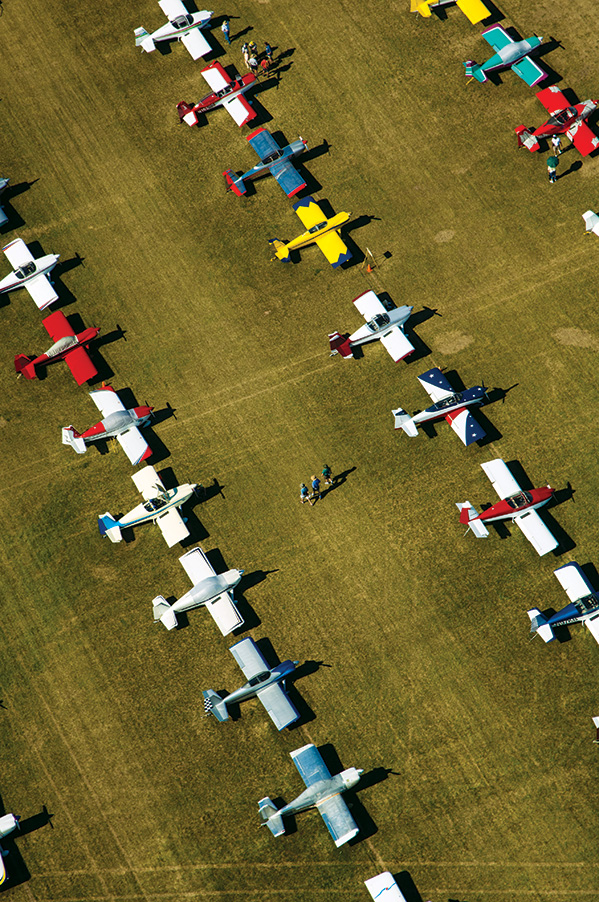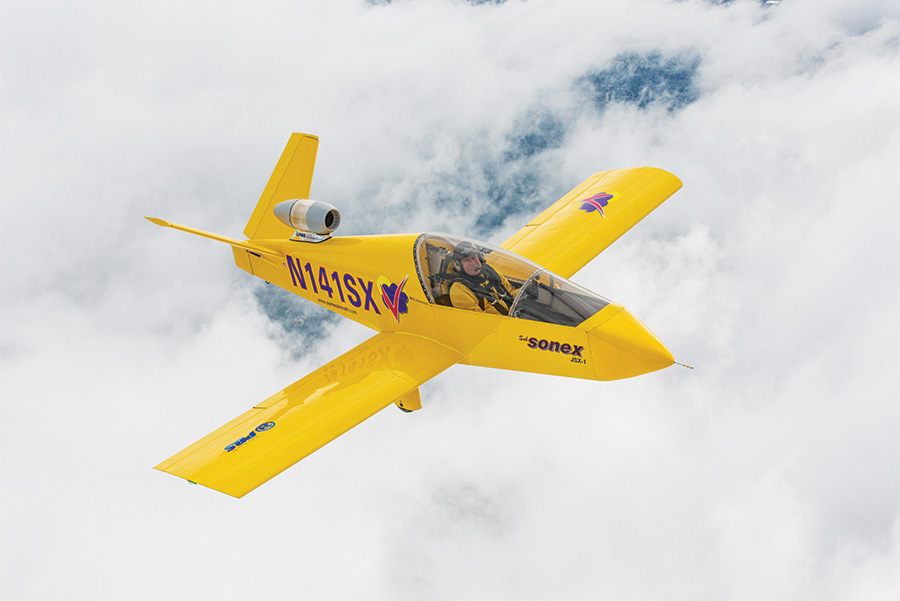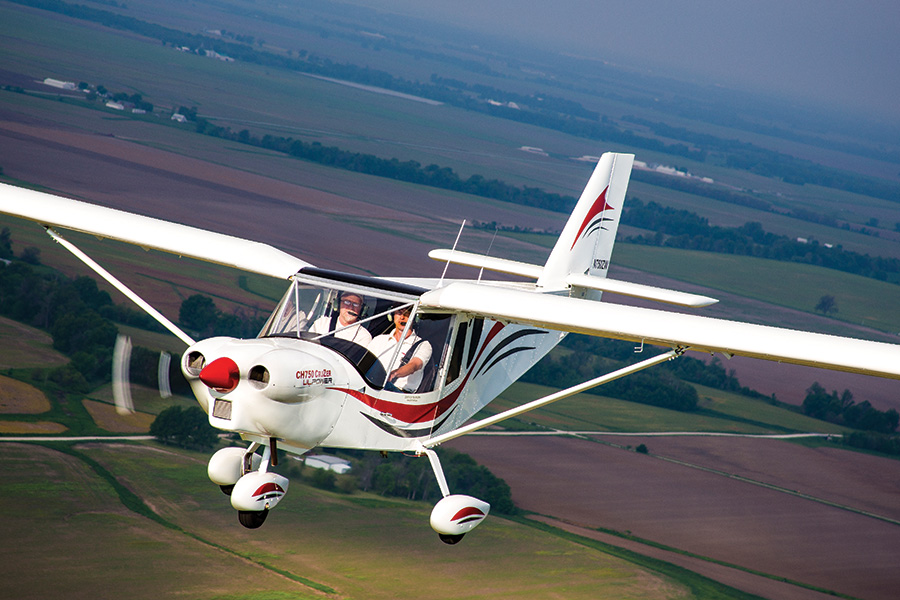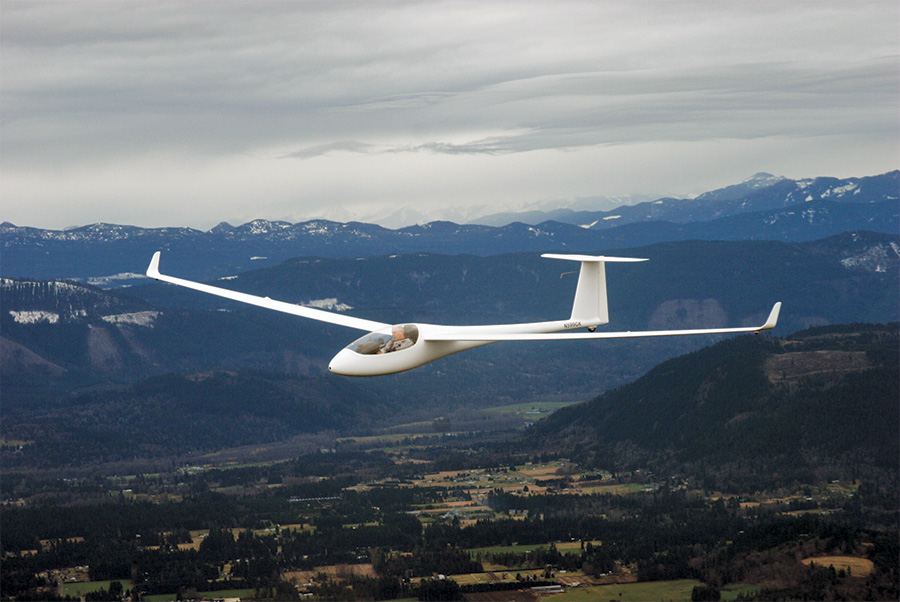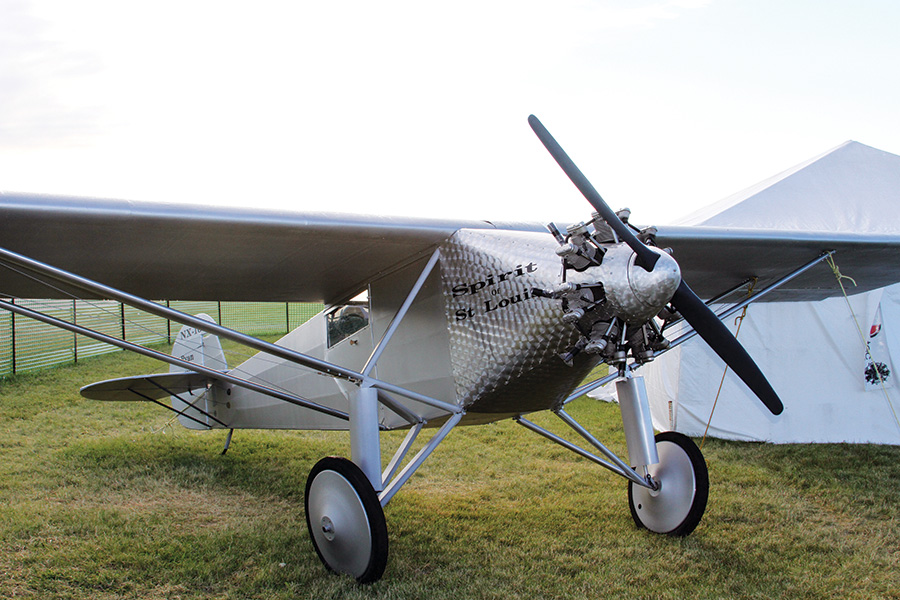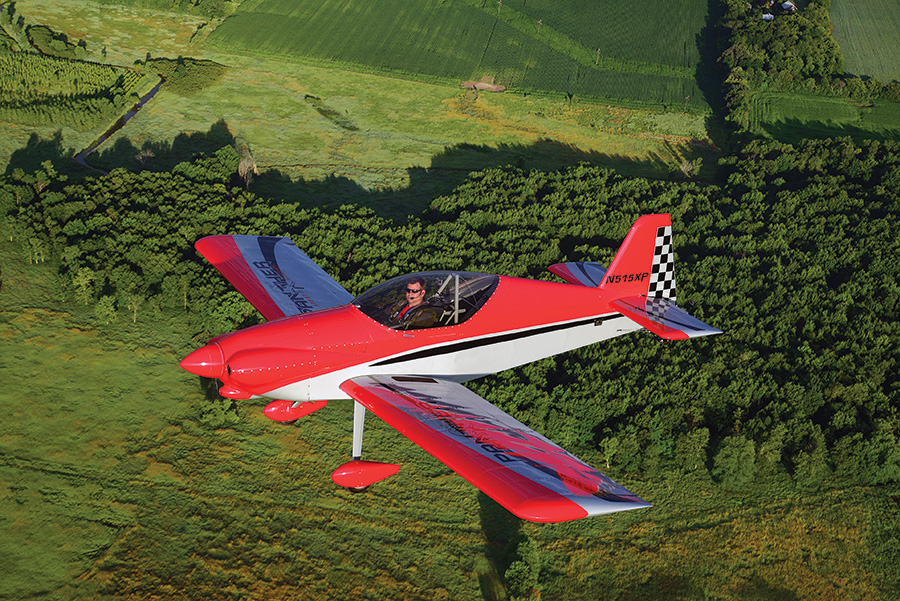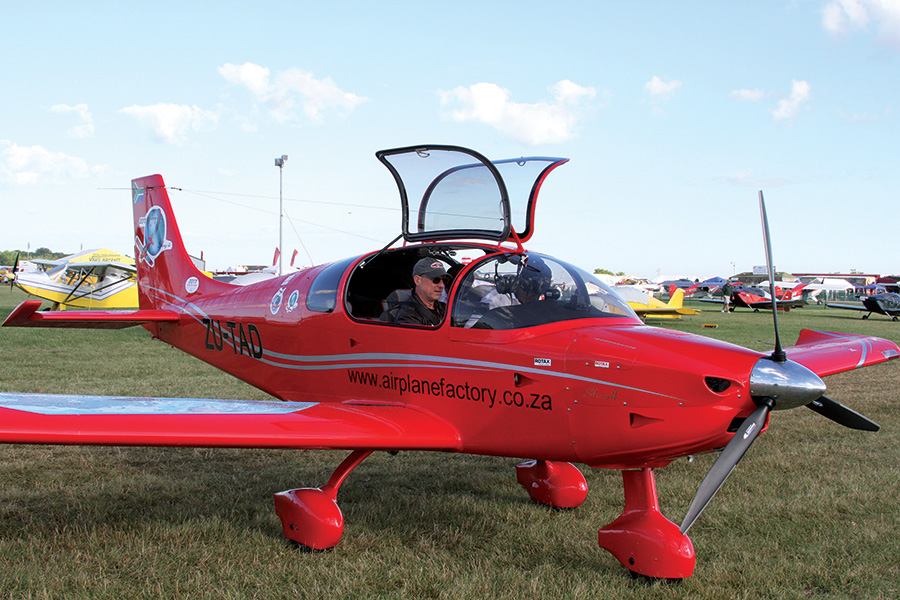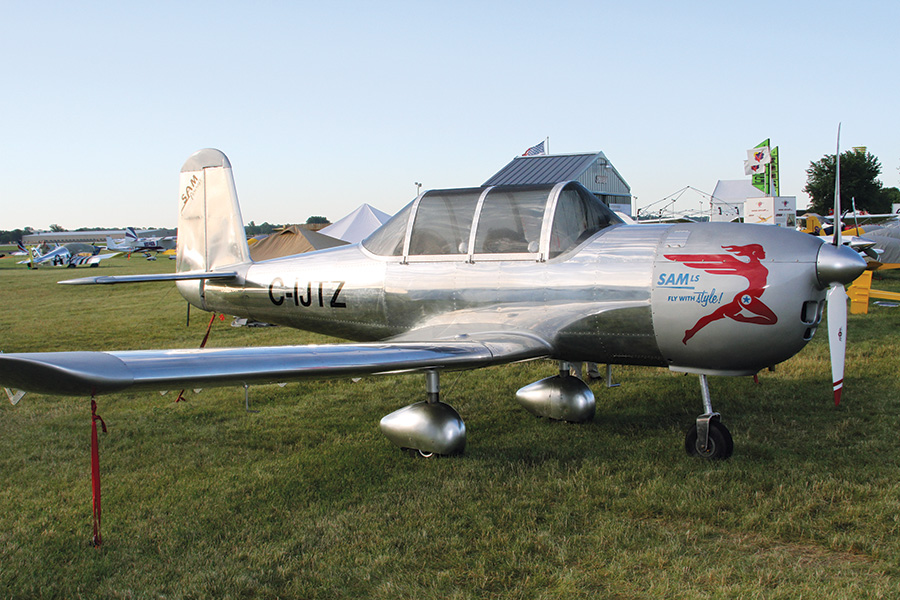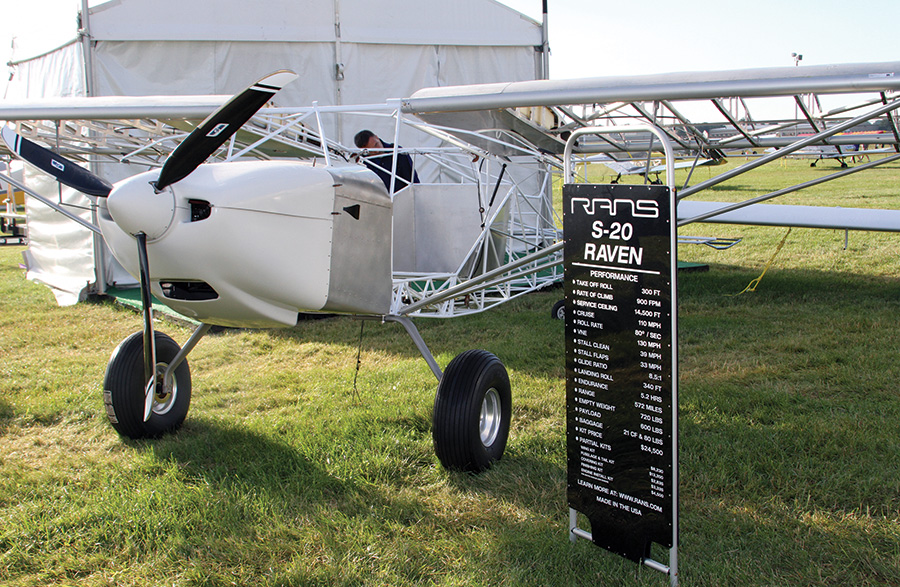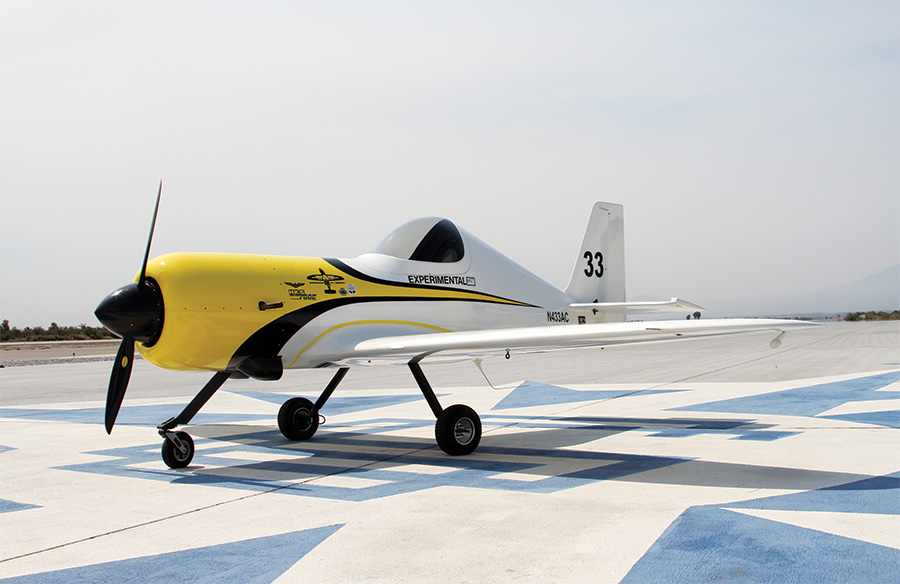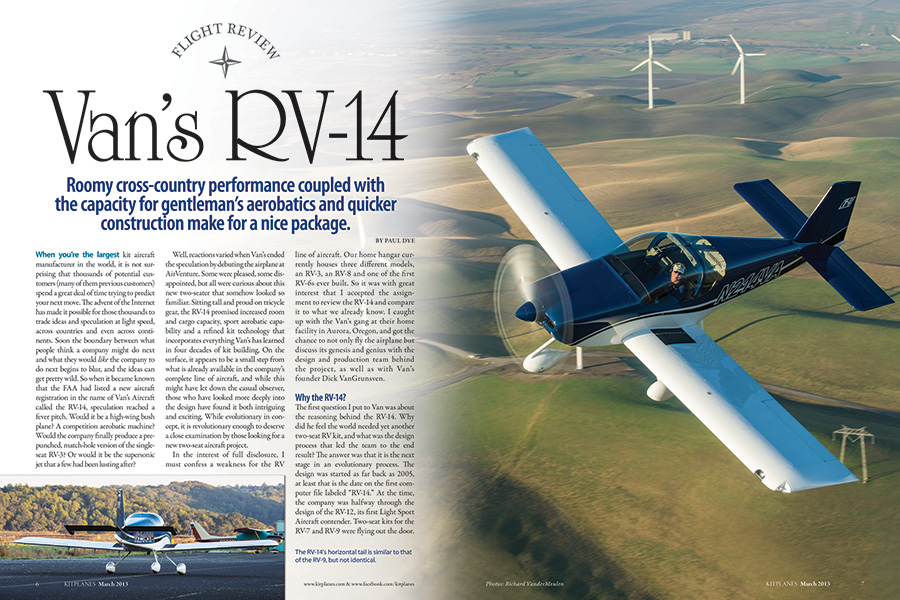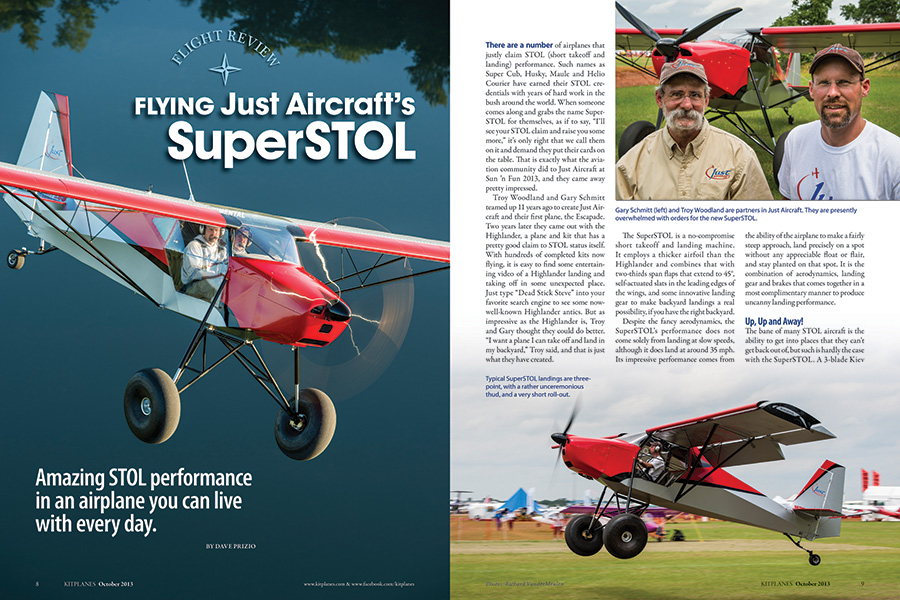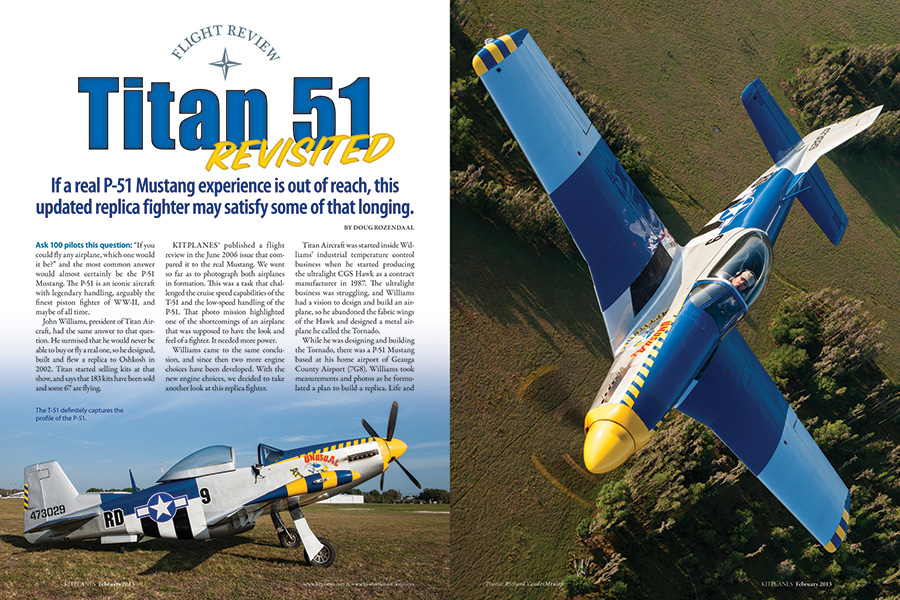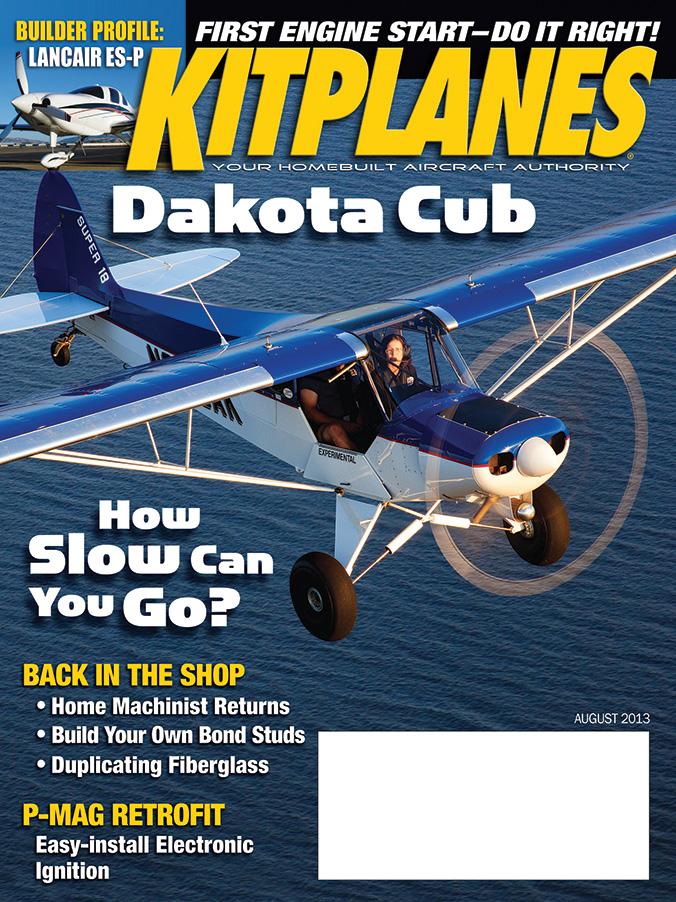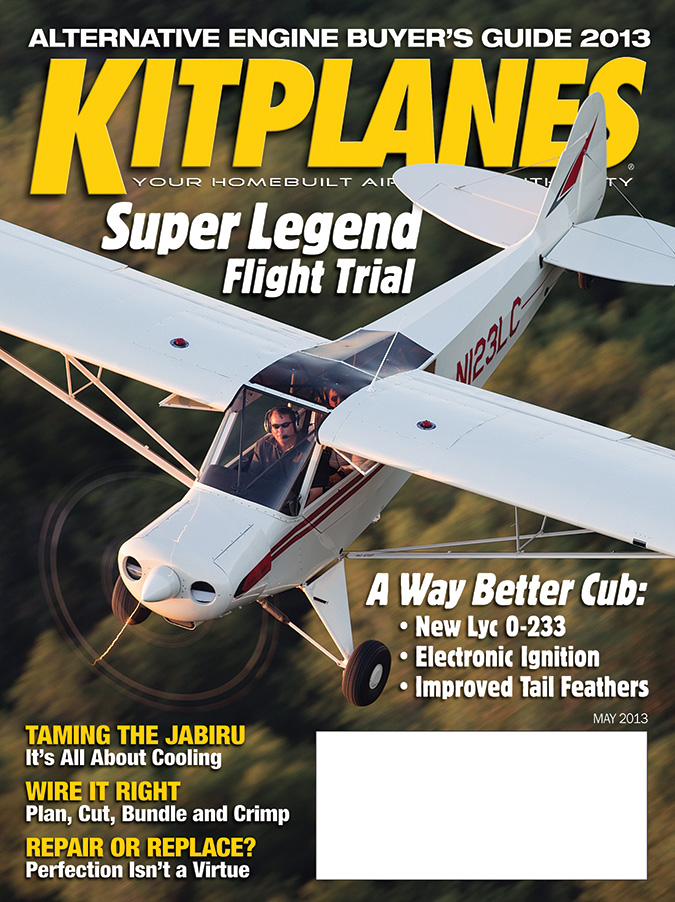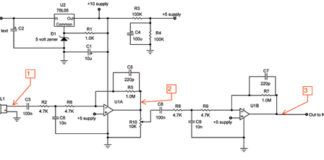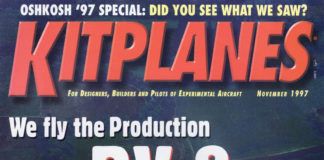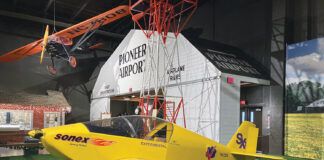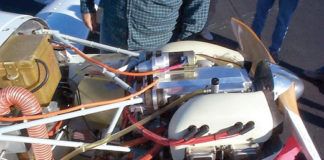The state of the kit world is sound!
That is the conclusion we reached in our visit to AirVenture 2013 this past July. Walking the grounds, talking with kit manufacturers, and most importantly with builders (and prospective builders), the buzz we found was that people are interested in not only completing existing projects, but in starting new ones. While the shear volume of entirely new aircraft kits might be down, there is a lot of activity in the kit company community: providing kits and parts for existing designs, improving kits already out there—and yes, showing the new designs on which they have been toiling. The down economy of the past few years seems, at least to us, to be easing back into recovery to the point where people are eagerly looking at and buying new products and projects. The recession has not killed Experimental aviation; it is coming back!
Without looking at the AirVenture vendor directory and comparing it to prior years, we can only estimate (based on appearances) that the North Display Area (a.k.a. kit manufacturer’s row) seemed better stocked and more crowded than in recent memory. There were new airplanes in several booths, upgraded designs in others. At least two companies have new single-seaters for the LSA market, and Sonex has rekindled the jet homebuilt market with its offer to sell the first ten delivery slots of its little SubSonex, an aircraft bound to be compared to the BD-5J that got so many of today’s generation interested in homebuilding in the first place. In between the LSAs and the jet, we found new STOL aircraft to delight those looking to go into the wild, and smooth flyers for going after that hundred-dollar hamburger. To all appearances, vendors weren’t just standing around and talking; they were writing orders!
This year’s Kit Buyer’s Guide reflects both the new and the old—and the upgraded ideas in between. Once again, our staff has taken the time to do some shopping for you, pulling together information on the kits available on the market as of this writing. This issue will highlight those new ideas that have appeared in the past year, and the online database started last year will help readers compare different designs and find more information on existing designs. It is our goal to provide a jumping-off point for someone asking the question, “What kit is right for me?”—and for experienced builders looking towards their next project. KITPLANES® is proud to provide the information and insights necessary for our readers to inform themselves and make better decisions as they jump into the world of homebuilding, and the staff stands by, ready to assist those builders in the years to come, as they complete and fly their dream machines.
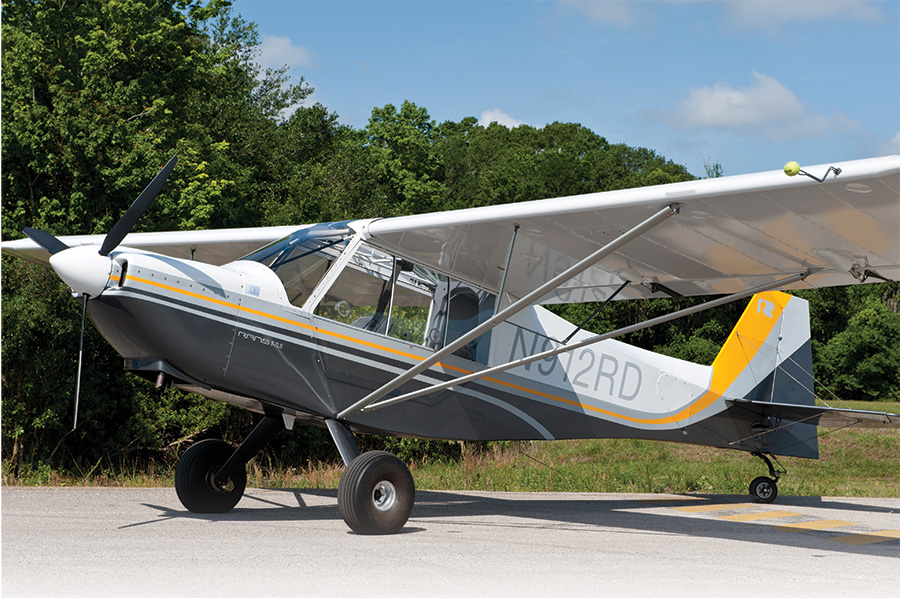
Our directory lists 138 kits with trigear, 149 with a tailwheel like this RANS S-7, and 52 that can be built either way.
Defining What’s New
Each year as we prepare these industry guides, we have to look closely at the long list of press releases that have accumulated in our inbox over the past 12 months. Manufacturers regularly announce new products, new designs, and new deals. But oftentimes, the “new” is interesting, but not enough to call the airplane a new model. Sorting the significant changes from the new aircraft models is interesting and takes judgment. One of our primary criteria, of course, is if the manufacturer carries a new model (rather than simply listing options to existing models) on their spec and price sheets. Most manufacturers in our small industry are very good about that.
If an entirely new manufacturer comes along (as has happened every year), we are overjoyed to start a new listing. When existing manufacturers come up with an entirely new design within their family of kits, that is also reason for rejoicing—and a new listing. But simple changes to landing gear, powerplant options, and cabin amenities will generally be noted with appreciation in the detailed listing and not generate a new model. For those manufacturers that offer a wide range of support for different engines, we will generally only list the aircraft once; it is up to the builder to call it what they will, depending on the powerplant they choose.
Changes and Upgrades
Most kit manufacturers can’t seem to keep from tinkering with their models or designs. By nature, they are homebuilders themselves, and they like to build; keeping a design the same for a year would bore them. So, models change and are upgraded. New wheelpants add speed. Additional engine choices are made available. Fairings, drag reduction, lift enhancement—they are all on the table for every airplane. While we try to reflect these in our listings, the best source of the most current specifications and features for every airplane in our database is the manufacturers themselves. Not only will they be happy to tell you what they have done to improve over last year, many will be happy to tell you what they are working on for the future. Our recommendation, of course, is to always buy the airplane that exists, and rejoice if something new and better comes along. Banking on the “new and better” that does not yet exist can be a recipe for disappointment. Research and Development generally takes longer than anyone expects—no matter how expert.
Why Digital?
Last year, KITPLANES® changed from a completely printed version of the popular Buyer’s Guide to an online database, introduced by fewer pages of description in the printed magazine. Change is, as always, a bit painful, and we received a number of responses critical of the change. It should be noted that we received almost an equal number of compliments; but as always, we like to please as many of our readers as possible, and it pains us to displease anyone. A great deal of discussion went on regarding the responses to the change, both positive and negative, and a lot of time was spent deciding on this year’s format. In the end, we believe that going online gives a lot of benefits for those truly researching new kits and designs—the ability to compare two (or more) designs directly being the most valuable. While we recognize that many of our readers were comfortable with the old way of doing things, we also know that the world is changing, and it is rare to find someone who does not have the ability to go online and get connected.
That said, this year we have done something different. For quick reference, all kits and manufacturers—and a few basic specifications—appear in print. However, the details of each design are not in the magazine—they are in the online database. Whether you subscribe or have bought this single issue, you have access to the database, and we encourage you to use it to find the specifics on whichever kits interest you.
One of the reasons that we decided to go (and stay) electronic with the Buyer’s Guide is the great amount of information that remains the same each year. In this issue, in print, we will touch briefly on what’s new since last year. The many fine kits that remain the same are still in the online guide, and they can easily be compared to the new ideas and designs that have come along.
Just as the homebuilding world has grown and changed from tube and fabric “fly it in the pattern” airplanes to cross-continent cruisers, the media world has changed as well. We hope that you will understand and utilize the online database in your research, and—as always—we seek your comments on how to make the database better.
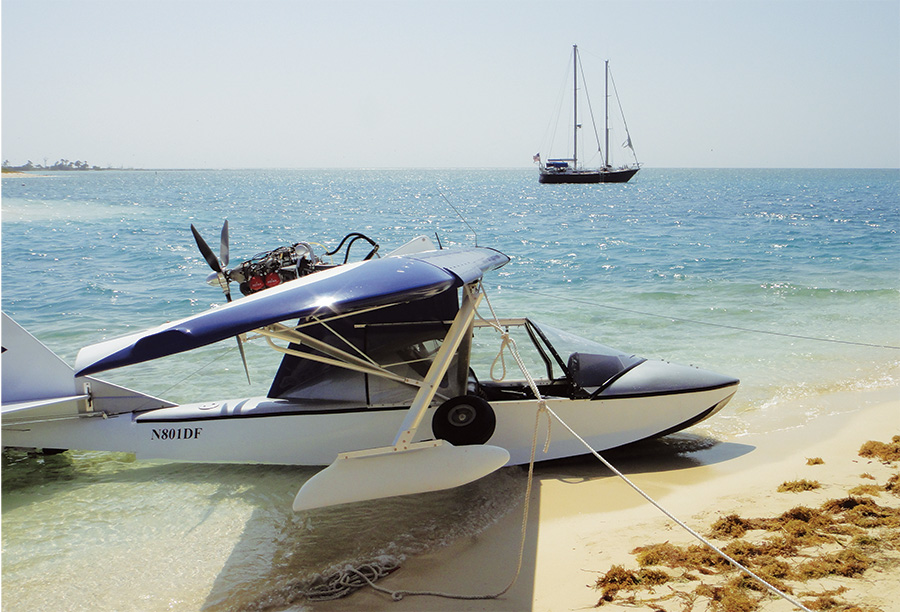
There are 149 kits designed around a Rotax engine, including the SeaRey. Lycoming engines (or Lycoming clones) power 71 kits. (Photo by David Forster)
Choices, Choices.
Choosing a kit is one of the most difficult things a prospective builder will ever do—that is until he or she actually starts building and discovers other, more difficult parts of the endeavor. But honestly, choosing the kit that is right for you is a task that shouldn’t be taken lightly. As a classically trained aeronautical engineer, I personally start with “mission.” I ask, “What is it that the airplane I am looking for needs to do? Does it need to go fast? Far? Carry a lot of load? Does it need to be aerobatic? How about a good sightseeing airplane—does it fly slow and have good stall characteristics? How about visibility? Does the airplane carry enough people, cargo and/or fuel? How about support for avionics?” Takeoff and landing distances, altitude performance—all of these have to do with mission.
On the other hand, there are folks that choose an airplane because it looks sexy. And many of those folks are successful builders, happy as clams with their choices. It is not our place to tell you how or what to choose, but to give you the information necessary to make those choices. We can suggest that you pick something appropriate for what you want to do with it—but for some, it is all about the panache and the looks you get taxiing up to the fuel pump or airport restaurant—and that’s OK as well.
Whatever method you put into your aircraft selection progress, we urge you to do your homework and put in the time it takes to do it right. Building an airplane is not really a hobby—it is more of a way of life. You will be living with your choice for a long time (statistically speaking, several years), and you need to be happy with it. Nothing causes builder burnout more quickly than continuing to work on a project that started out well, but now appears to be a dead end. Many a builder started out with a small single- or two-place airplane and then found themselves with extra small people in their family who need places to sit. Build for the mission you expect to have in the timeframe that the aircraft will be completed, not just for what you need now.
Where Does the Data Come From?
The information in the KITPLANES® kit listings comes, primarily from the manufacturer—not from independent trials by KITPLANES® staff. Although we would love to be like Consumer Reports and test hundreds of products using a battery of trials, that simply is not possible in the Experimental aircraft industry, for a couple of reasons. First and foremost, no two kit aircraft are ever identical. Giving precise, as-flown numbers, corrected to standard-day conditions, would be wonderful—but fairly meaningless—expect for the specific aircraft used for the test. Some have suggested we get a bunch of Cub-like aircraft together with a bunch of KITPLANES® writers at a mountain airstrip for a week. We’d let everyone fly every airplane a few times and then compare and contrast them all. While this is certainly an attractive idea to most of our regular writers, it is entirely impractical when you consider fuel costs, insurance issues—and the simple fact that comparing two different aircraft designs is fraught with peril for the reviewer because no two aircraft designs have the exact same mission.
Most flight reviews are limited in scope and give the writer/test pilot a good feel for the airplane and whether it comes close to the design criteria. If we see a significant disconnect between the numbers we obtain and the numbers published by the company, we generally call that out in our review. For data boxes, in order to get consistency, we generally use the manufacturer’s numbers and say that plainly at the bottom of the table. We don’t fly every model of aircraft listed in the Guide, and therefore, the best way to give everyone an honest chance is to use the manufacturer’s numbers. If we see an 1100-pound gross weight, 100-horsepower airplane claiming a high-Mach cruise, we’ll call the company on that. But generally, we have an honest industry; the dishonest companies fail to meet their claims and don’t survive.
So we rely on our readers’ good sense to verify claims before purchase and look at the numbers with a critical eye. The laws of aerodynamics can be bent a little, but rarely can they be broken. If something looks too good to be true, it probably is—use your due diligence and check things out.
New Aircraft
This year’s new designs include everything from a high-performance sailplane to a single-place personal jet. In between these extremes are two aerobatic single-seaters, a four-place family hauler, and a three-quarter-scale replica of the Spirit of St. Louis, powered by a radial engine. There’s also a variety of two-place aircraft. All are LSA legal, but they were built with completely different design objectives. So, without further ado, let’s take a closer look at the newest kit aircraft.
Sonex Aircraft SubSonex
If you’ve ever dreamed of owning your own personal jet, your dream can now become a reality. The single-seat SubSonex climbs at 1900 feet per minute, has a sea-level cruise speed above 180 mph, and stalls at 59 mph with full flaps. Range is over 300 miles with reserve. Empty weight is 416 pounds, useful load is 484 pounds, and the aerobatic weight is 750 pounds. Takeoff distance is 1200 feet, and landing distance is 1000 feet.
Powering the SubSonex is a PBS TJ-100 turbojet engine that produces 247 pounds of thrust. The engine was designed for UAV, UCAV, Experimental aircraft, and motorized gliders.
The SubSonex is intended to fly under Experimental Exhibition category rules. Without the 51% rule restrictions associated with Experimental/Amateur-Built airworthiness certification, the SubSonex will ship with pre-assembled wings, fuselage, tail, control surfaces, canopy, and windshield. Customers will install the outboard wing panels, engine, fuel system, retractable landing gear, avionics, electrical systems, BRS full-aircraft recovery parachute system, pre-molded fiberglass components, upholstery, and paint.
If all those tasks sound more like work than play, relax! Experimental Exhibition category regulations allow customers to hire builder assist centers or aircraft finishing services to do the work for them.
To fly the SubSonex, pilots must qualify for an FAA Letter of Authorization (LOA). Commercial pilots operating jet or turboprop aircraft should easily meet the requirements. Pilots without jet experience can also qualify after completing appropriate training, which will be available through Sonex Aircraft’s T-Flight Transition Training Program.
Sonex Aircraft is accepting $10,000 refundable deposits for the first 10 kits, which are priced at $125,000. Included in the price are the SubSonex Ultra-Quick Build Kit and the PBS TJ-100 turbojet engine with installation accessories. The price is guaranteed for the first ten kit reservation deposit holders. Kit deliveries are expected to begin in mid-2014.
Zenith CH 750 Cruzer
Zenith Airplane Company has been quite successful with their Light-Sport-eligible STOL CH 750. It has amazing short takeoff and landing capability, a roomy side-by-side cabin, excellent visibility, good flying characteristics, works with a wide range of engines, and can be built from plans or a well-developed kit that goes together quickly.
With all this going for the STOL CH 750, why did Zenith develop the new CH 750 Cruzer? Because many people who liked the basic CH 750 design didn’t really need extreme STOL capability and wanted a higher cruise speed.
There’s no doubt that the CH 750 Cruzer looks similar to the STOL CH 750. They use the same basic fuselage, but the design has been optimized for economical cross-country cruising and use on paved runways.
Perhaps the most obvious change is the wing. Gone are the leading-edge slats, replaced by a new wing with a completely different airfoil. The internal structure of the wing is also different, because the Cruzer has a single aerodynamically faired lift strut on each side, instead of the dual lift and jury struts found on the STOL CH 750.
For easier access to the cabin, the gear legs have been shortened a few inches. Wheelpants have been added to reduce drag, and the empennage has been changed, too. The high-lift design of the STOL CH 750 has been replaced with a thinner-section tail plane that is more than adequate for normal operations. The rudder is the same, but the vertical fin is new.
How do the changes affect performance? The Cruzer is about 20 mph faster than the STOL version and climbs approximately 200 feet per minute faster. Takeoff and landing distance is 350 feet, quite a bit more than the STOL CH 750, but still very short. Most important of all, you can now build a CH 750 that’s optimized for the type of flying you enjoy most. For more information on the Cruzer, see KITPLANES® November 2013 issue.
HP Aircraft HP-24 Sailplane
With avgas prices north of $6.00 a gallon, the idea of building an aircraft that doesn’t use any fuel keeps looking better all the time. The HP-24 is a 15-meter glider that is built from composites. With delightful handling characteristics and a very-respectable lift-to-drag ratio of 39:1, it’s not an exaggeration to call it a high-performance sailplane.
The HP-24 project began when Bob Kuykendall and Steve Smith decided to develop a new set of wings with a modern airfoil for the HP-18 glider. The HP-18 was the last of a series of homebuilt gliders designed by Richard Schreder and offered as kits in the 1960s and ’70s. After working on the wings, Kuykendall started working on sketches and drawings for what would become the HP-24 kit sailplane.
One of Kuykendall’s heroes, and a source of engineering inspiration, is none other than Richard VanGrunsven, designer of the RV series of aircraft. VanGrunsven is an avid sailplane enthusiast and even provided hangar space where Kuykendall performed static load tests on the prototype HP-24 wings. But make no mistake; building an HP-24 is a completely different process than building an RV.
When you open the crate to an HP-24 kit, the first thing you’ll see is a lot of carbon fiber. There’s definitely a learning curve to working with this material, so Kuykendall strongly recommends that builders spend at least one week in his shop in Arnold, California, laying up tail, wing and fuselage skins. This ensures that builders will learn the necessary skills to complete and maintain their sailplanes. Even with builders doing some work at the factory, Kuykendall says the HP-24 kits are fully in compliance with the FAA’s 51% rule. For more information about the HP-24, see page 16 of this issue of KITPLANES®.
Airdrome Aeroplanes Spirit of St. Louis Replica
Replica historical aircraft have long been a part of Experimental aviation, and most look like WW-I or WW-II fighters. Robert Baslee’s Airdrome Aeroplanes builds kits that resemble Fokker, Nieuport and Sopwith aircraft from almost 100 years ago, but now they’re offering something different: an extremely realistic replica of the Ryan NYP, more commonly known as the Spirit of St. Louis.
The project began when a bank commissioned Baslee to build a replica of the original Spirit of St. Louis for a television commercial. Baslee started with a 110-horsepower seven-cylinder Rotec engine that just so happens to be three-fourths the size of the Wright Whirlwind J-5C radial that powered the original Spirit of St. Louis. The rest of Baslee’s replica was scaled to the engine, and like the original NYP, it lacks many features we now take for granted, including brakes, steerable gear and forward visibility.
Baslee made the kit prototype as realistic as possible and believes that many potential customers will want to experience flying the same way it felt to Lindbergh when he made his historic flight in 1927. No forward visibility may be acceptable for brief flights in remote areas, but when the kit is available later this year, Baslee will offer a viable solution.
One possibility is to use video cameras and a cockpit display. Another option is to make the forward fuselage from Plexiglas and cover it with vehicle-wrap film. This material is usually used for graphics on cars and buses, and often covers the entire vehicle—including the windows. From the outside, the forward fuselage of the replica Spirit of St. Louis will look just like the original, with a large fuel tank with a turned-metal finish. But inside the cockpit, the pilot will be able to see through the film and will have an unobstructed view forward.
Baslee estimates a cruise speed around 105 mph, stall speed below 45 mph, and a three-and-a-half-hour range. The kit is expected to sell for $12,995, not including engine and avionics. Purists who value historical accuracy will have to wait and see if, like the original NYP, a side periscope is available as an option.
Sport Performance Aviation Panther
Single-seat aircraft have never been as popular as aircraft with more seats because there’s no way to share the fun. On the other hand, they are often more economical to build and fly than larger aircraft. For pilots who enjoy flying solo, Sport Performance Aviation’s Panther is a viable option.
Speaking of options, there’s certainly more than one way to build a Panther. The aircraft can be built with a 23.5-foot wingspan to meet LSA requirements, or a 21.5-foot wingspan for greater speed and sportier performance. To save space in a hangar, or to allow the Panther to fit in a trailer, a single person can fold the wings in about two minutes, without disconnecting the controls.
The next decision is the engine. Lycoming, Continental, Jabiru and ULPower engines will all be supported, but a Corvair powers the prototype. Why Corvair? It just so happens that Panther designer Dan Weseman and his wife, Rachel, have been selling components for Corvair flight engines for years.
After deciding on an engine, the next option is landing gear. The prototype is a taildragger, but development of a Panther with tricycle gear is well underway. The bubble canopy is replaceable by a small windshield and skirt for open-cockpit flying.
The Panther can be built from a kit or from plans. The skins are 6061 aluminum, and the fuselage has a 4130 steel cage from the seatback to the firewall. The cage is welded at the factory and pre-built spars and fuel tanks will be available as an option. Flush rivets are specified for most of the airframe, but solid rivets can also be used. The main wingspar must be riveted with solid rivets.
The Panther is stressed for +6/-4.4 G at 1150 pounds for the short-wing Sport version. Gross weight is 1150 pounds, and empty weight will be 650–850 pounds. Top speed is estimated at 160–200 mph, depending on engine. Vne is 220 mph.
The long-wing LSA version is stressed for +6/-4.4 G at 1020 pounds. Gross weight is 1115 pounds and top speed 140–180 mph. However, for the Panther to remain LSA compliant, an engine/propeller combination must be used that will limit top speed at maximum continuous power to 138 mph at sea level on a standard day. Empty weight for the LSA Panther is 650–750 pounds and Vne is 200 mph.
The Panther kit is priced at $11,500. It does not include hardware, engine mount, engine, propeller, wheels, brakes, cowling, spinner, instruments and avionics.
The Airplane Factory Sling 4
In 2009, The Airplane Factory proved that Light Sport Aircraft could be serious traveling machines when company founders Mike Blyth and James Pitman flew the production prototype Sling 2 around the world, with a stop at Oshkosh during AirVenture. In 2011, the Sling 4, a four-seat variation of the standard two-seat Sling, also circumnavigated the globe. The Sling 4 is now available as a kit.
Powered by a 115-hp turbocharged Rotax 914 UL engine and an Airmaster electric constant-speed prop, the Sling 4 has an empty weight of 1036 pounds, a gross weight of 2028 pounds and a useful load of 992 pounds. Cruise speed is 120 knots, climb is 800 fpm, and fuel burn is typically less than 6 gallons per hour. It’s one of the few homebuilts that is capable of carrying 4 adults, their baggage, and 6 hours worth of fuel.
The Sling 4 is essentially an elongated Sling 2 with a small increase in wingspan. Two extra seats were added in the baggage compartment of the Sling 2, and the area was extended far enough to still provide ample room for baggage. Slightly larger fuel tanks were added to the wings, and the canopy received gull-wing doors. Flying characteristics and performance of the Sling 4 are virtually identical to the Sling 2.
Like the Sling 2, the Sling 4 is built primarily from aluminum. Solid rivets are used on the mainspars, and pull rivets are used for the rest of the structure for easy assembly. The landing gear is composite construction, as are the cowling, fairings, wheelpants, instrument panel and canopy structure.
The basic kit price is $36,310. Add in the Rotax 914 UL, the Airmaster prop, leather upholstery, avionics, a parachute system and other extras, and a completed aircraft will be in the neighborhood of $110,000.
SAM Aircraft SAM LS
There’s no shortage of Light Sport Aircraft these days, but few are metal kits with tandem seating. That’s the niche the SAM LS will occupy. Company founder, Thierry Zibi, is a big fan of the Ryan STA, a gorgeous, low-wing, tandem taildragger from the 1930s. It became the inspiration for the SAM LS, although the prototype has tricycle landing gear, so it looks more like a Varga Kachina than it does the Ryan.
SAM aircraft will offer several different variations of their design, all based around a common fuselage, tail, and wing center section. The first version available is the SAM LS, which meets Light Sport Aircraft requirements. Builders can choose between tricycle and tailwheel landing gear, and a full canopy or an open cockpit with a windscreen. If the full canopy is purchased, it can quickly be removed and reinstalled, making it easy to convert back and forth to the open-cockpit configuration.
The engine of choice is a 100-horsepower Rotax 912 ULS. With its 28-foot-7-inch wingspan the SAM LS cruises at 125 mph and climbs at 710 fpm at the LSA gross weight of 1320 pounds or 600 fpm at the design gross weight of 1450 pounds.
Need greater speed? The SAM CC (Cross Country) will use the same basic airframe as the SAM LS, but will have a shorter 25-foot-3-inch wingspan. It will meet the requirements of the Experimental/Amateur-Built category. Also planned is the SAM STOL, with a longer 31-foot-10-inch wingspan, stressed for 1,320 lb.
The SAM LS kit consists primarily of pre-punched parts, which are fastened together with pulled rivets, except for the 5/32-inch solid rivets in the main wingspar. These rivets can be set with a rivet gun or squeezer, or builders can order an optional pre-assembled spar. The 4130 roll-protection cage is delivered welded and corrosion protected. The fiberglass fuel tanks are assembled and leak-tested by SAM. Estimated build time is 900 hours for a standard kit and 500 hours for a quickbuild kit.
Until the end of winter 2014, standard kits are $23,200 and quickbuild kits are $33,440. Estimated completed price, including engine, propeller, avionics and instruments is $61,680. Beginning in spring, 2014, prices will be $29,000 for standard kits and $41,800 for quickbuild kits. Estimated completed price will be $68,850.
RANS S-20 Raven
Two of Randy Schlitter’s most popular designs have been the S-6S Coyote II with side-by-side seating, and the tandem-seat S-7S Courier. The new S-20 Raven is a combination of both. Designed to be a side-by-side bush plane, its wings, tail, fuel system, and ailerons are from the S-7S, while the engine system, control sticks, flap lever, rudder pedals, seats, and instrument panel were originally used in the S-6S.
Of course, the Raven has some new features, too. Reversible landing gear makes it easy to switch from trike to tailwheel in just a few hours. The large metal baggage area provides 21.2 cubic feet of space and has a capacity of 80 pounds. Wide doors and sliding seats make it easy to enter or exit the cabin. And there’s even a choice of tail styles: RANS’ signature tail shape or a curved tail that is reminiscent of a classic taildragger.
The S-20 Raven is powered by a 100-hp Rotax 912 ULS spinning a ground-adjustable prop. Gross weight is 1,320 pounds and estimated cruise is 110 mph, so the aircraft easily meets LSA requirements. Takeoff roll should be about 300 feet, landing distance will be around 340 feet, and rate of climb is estimated at 900 fpm. Empty weight is 720 pounds, leaving a typical useful load of 600 pounds.
To make construction easy, the rugged steel fuselage and tail are welded at the factory. One-piece stamped ribs are pre-punched to final hole sizes, and CNC-drilled spars eliminate almost all critical drilling and locating of holes. The kit also includes a CNC-machined aluminum boot cowling for faster assembly. Estimated construction time is 500–700 hours for a standard kit and 250–350 hours for a quickbuild kit. Complete standard kits are priced at $24,500 firewall back. Quickbuild options add $9,750 to the standard kit price. Engine, firewall-forward components, avionics, and paint are not included in the kit.
Aerochia LT-1
One look at the Aerochia LT-1 and you know this single-seater was influenced by WW-II fighters. It has racing in its DNA, too. Aerochia was founded by Andy Chiavetta and Darryl Greenamyer. Their first project was construction and modification of Greenamyer’s Lancair Legacy racer. After numerous wins at the Reno National Champion Air Races, Chiavetta began to focus on building a low-powered, high-performance, carbon-fiber aircraft. The result is the LT-1.
Powered by a 2-cylinder, 4-stroke, 60-hp HKS 700E engine turning a 2-blade AeroLux propeller, the LT-1 tops out at 160 mph while burning only 4 gallons of auto fuel per hour. Typical cruise at 60% power is 138 mph and Vs is 55mph. Climb rate is 650 fpm at gross weight or 1000 fpm lightly loaded. Vne is 207 mph. Fuel capacity is 18 gallons.
The LT-1 airframe is 90% carbon fiber, with the majority of the parts pre-molded. The builder merely bonds the components together, like building a giant model airplane; no large-scale fabrication is required. The result is an airplane with an empty weight of 500 pounds, a gross weight of 793 pounds, and a useful load of 293 pounds. Maneuver limits are +6/-4 G.
The LT-1 kit consists of four subkits: fuselage and empennage, wing, firewall-forward, and finishing kit. The kit price is $29,900 and does not include engine, propeller, avionics, upholstery, and paint.
With over 360 aircraft in our online database, it’s easy to see there’s a homebuilt for almost everyone. We’re constantly amazed at how many different ways there are to build a flying machine. Here’s a quick look at aircraft we flight tested in 2013. They are only a very small sample of the kits available to builders. But they do show the diversity that exists in the homebuilt aircraft market today.

